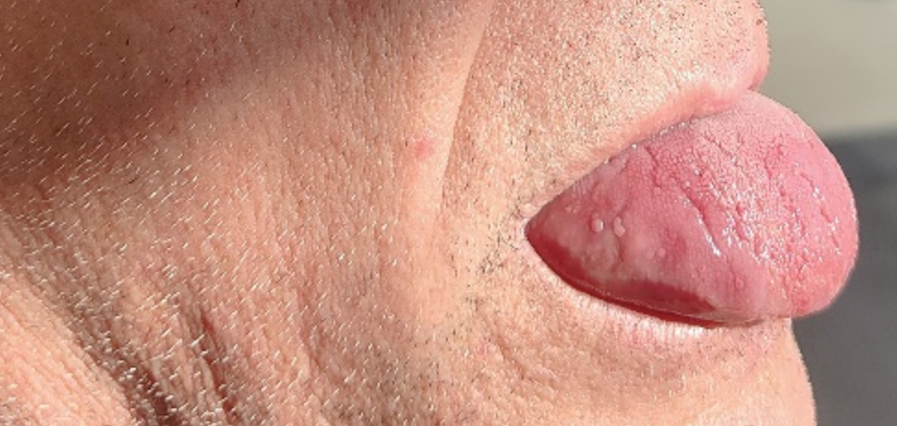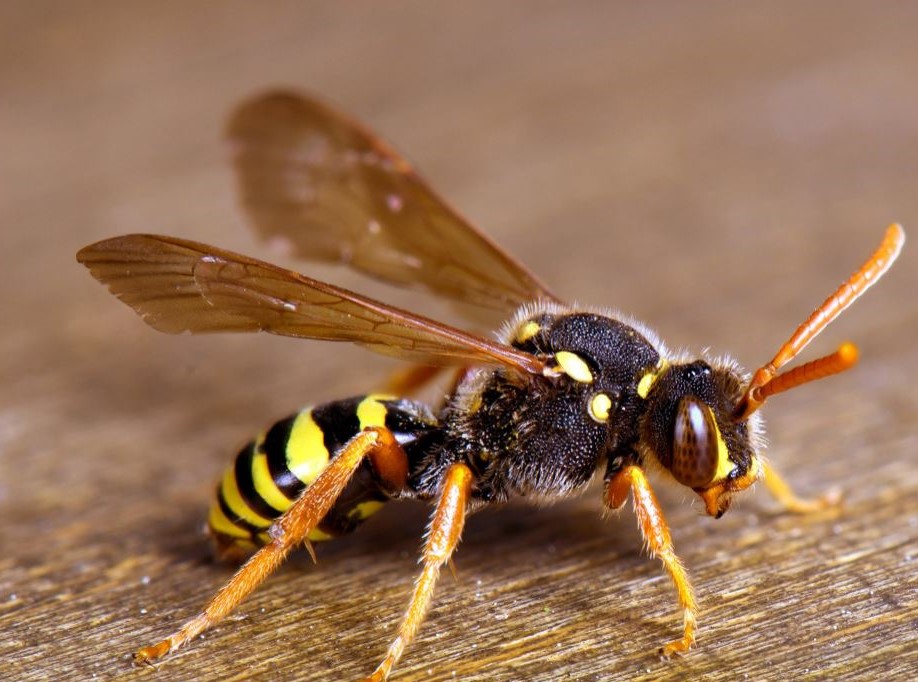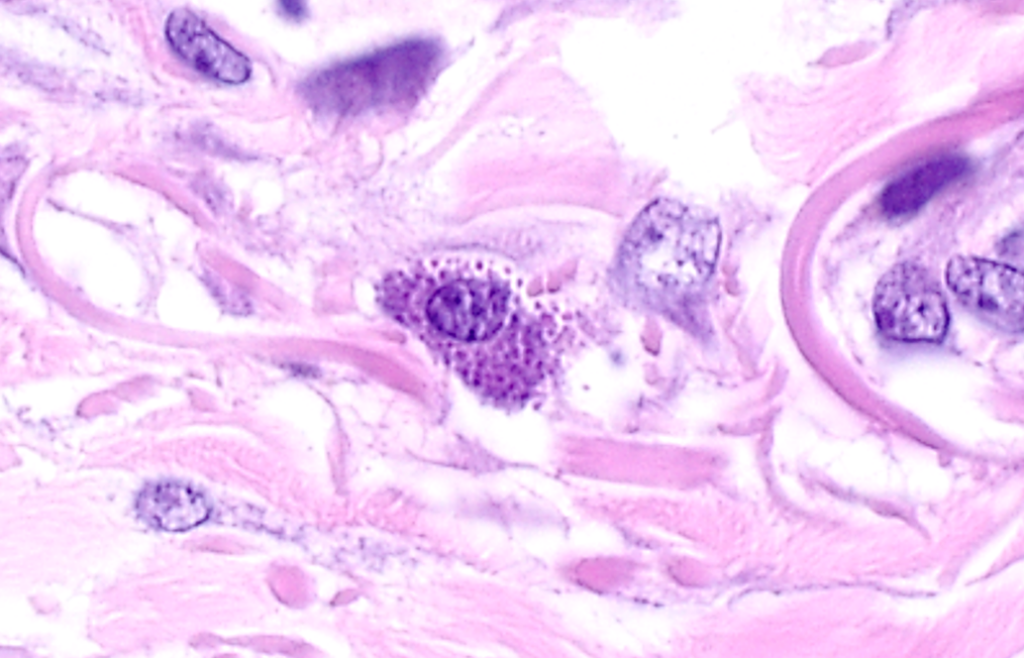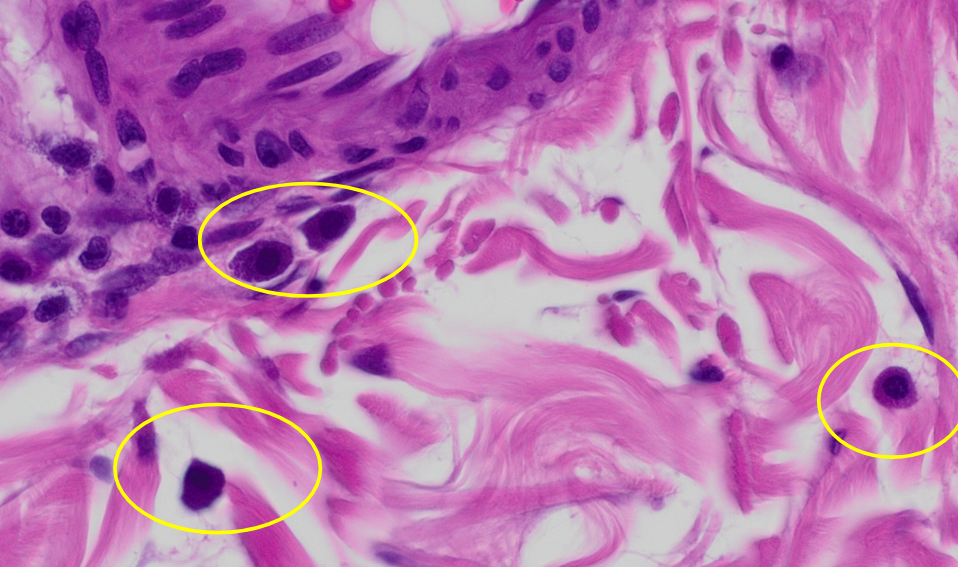‘ Significance of Mast Cells and Antihistamines‘

Figure 1: Tongue swelling approximately 5-10 minutes after the sting and immediately after taking an antihistamine tablet.
Case Report: A 65-year-old man was enjoying a drink outdoors when he was suddenly stung on the tip of his tongue by a wasp which was either on or inside the glass he was drinking from. The man immediately swatted the wasp away and removed the stinger which had remained in his tongue. He reported intense pain, and a friend noted a tiny puncture wound on the tongue slightly right of center. Within a minute, rapid swelling began, and the man asked for medical attention. He walked to a pharmacy about 100 m away and waited for service for a few minutes. He noted burning pain during this time and progressive swelling, particularly on the right side of the tongue. (Fig. 1) When his history was given to the pharmacist, she gave him an antihistamine, Fexofenadine (Telfastin Allegro) 120 mg which he took immediately with water.
He was also instructed to call emergency services because the swelling from a sting in the mouth could progress to block the airway. While the medicine was working, a friend started driving him to the nearest hospital, about 20 minutes away. By the time they arrived at the hospital, the swelling had subsided enough that the man felt well enough to eat dinner. About 1 hour after taking the antihistamine his tongue was nearly back to its normal size. By the next morning, he perceived that a bit of the swelling had returned, and a doctor instructed him to take one more dose of the antihistamine which relieved all symptoms.

Figure 2: A representative wasp.
Why did a wasp sting (fig. 2) cause this massive amount of life-threatening swelling and why was the antihistamine effective in quelling the swelling? Well, at the center of this drama is the ever-present mast cell which ties everything together. Mast cells are immune cells which are produced in the bone marrow and live in your tissues to help defend you from any foreign invaders such as pathogens including viruses, bacteria, parasites and fungi, or toxins such as the venom from a bee or wasp sting. Mast cells may overact to harmless things in your environment such as pet dander causing allergic symptoms.

Figure 3: A mast cell releasing granules.
Mast cells (Fig. 3) are large cells with a round nucleus and plenty of cytoplasm filled with hundreds of granules. One of the main components within mast cell granules is histamine. When a toxin like wasp venom is introduced into the body, it is recognized by B-cells which then produce antibodies which proceed to activate the mast cells to degranulate or release granules and thereby histamine. The flood of histamine sets off a cascade of events that:
- Open blood vessels and break down connective tissue to allow more immune cells to migrate into the area.
- Fill your tissues with fluid (swelling) to bring immune cells in and flush the toxins out.
- Create mucus and cause muscle contractions in the GI tract.
These actions cause swelling and itching after a sting, or the sneezing and runny nose associated with various allergies. Although these symptoms are annoying, the underlying process is effective in dealing with toxins and pathogens which have gained entry into our bodies. The problem is that allergic reactions can be excessive and harmful, such as in this case. However, the treatment is simple – if you can block the histamine receptors in the surrounding tissues with an antihistamine medication, then histamine won’t be able to bind to its targets and tissue swelling will not occur.

Figure 4: Mast cells ready for action near a blood vessel.
In this case, the patient did not have a known allergy to wasp venom but reported that he had been stung multiple times by wasps a few months prior while gardening and that he actively tries to get stung because he believed that it would desensitize him to the venom. Based on what happened, it appears that he has now become sensitized and should practice avoidance and keep an antihistamine handy.
Have you ever experienced massive swelling after a sting? If so, now you know why.
Thank you for reading and stay safe out there.
Dr. Culton